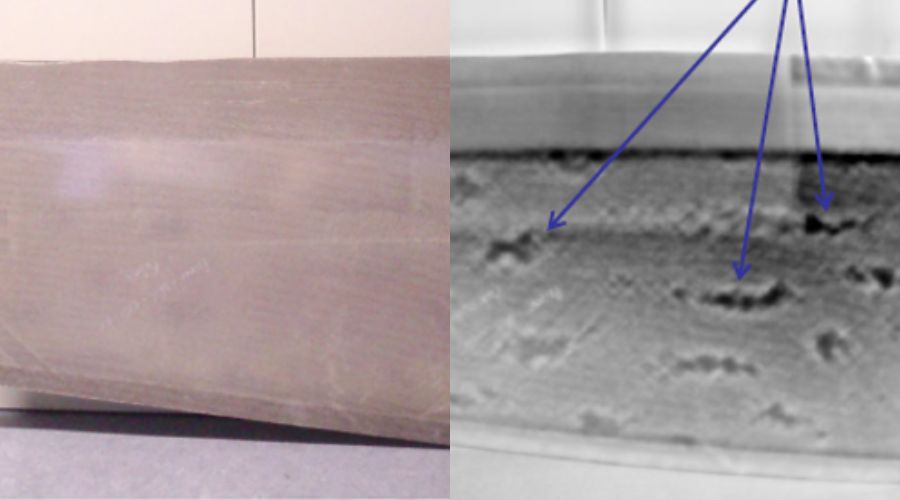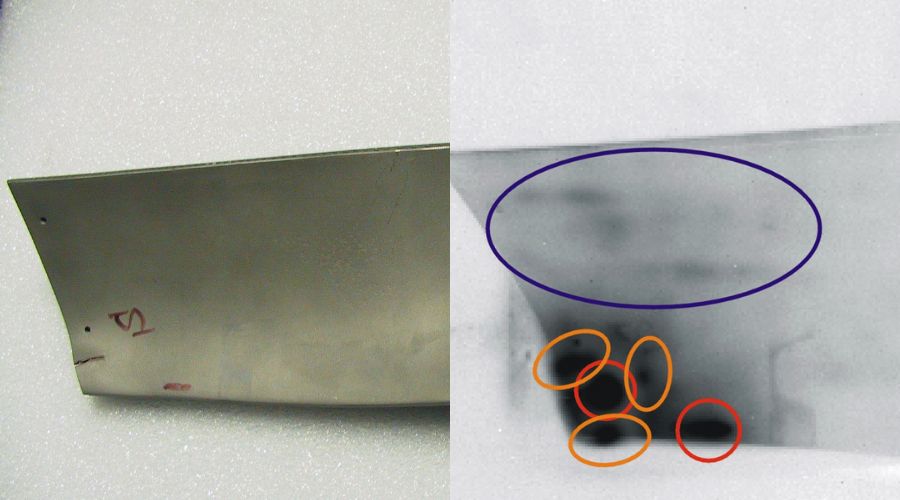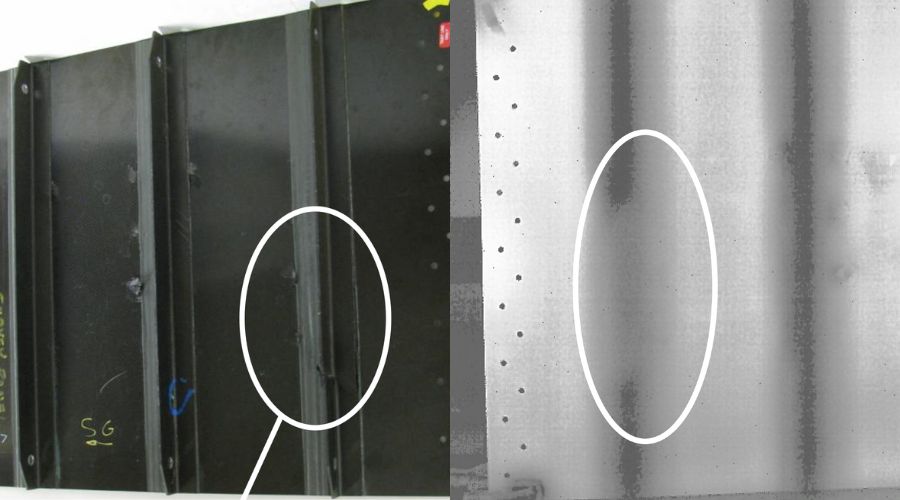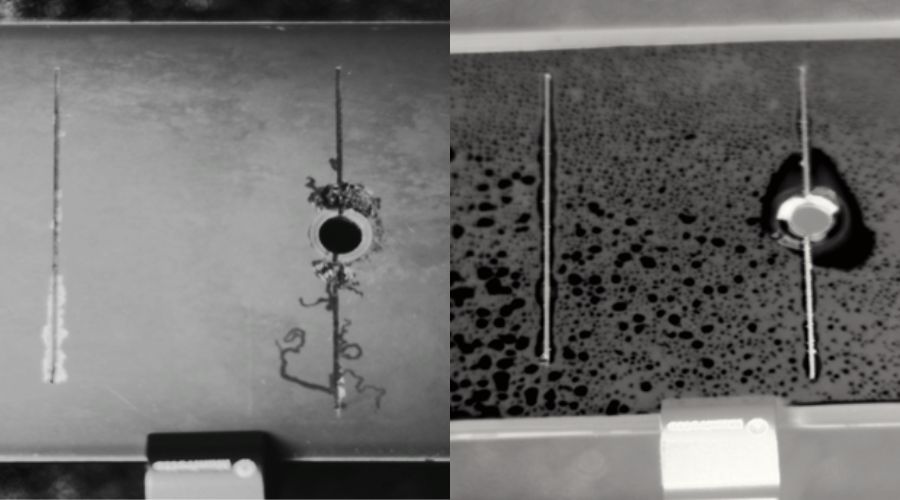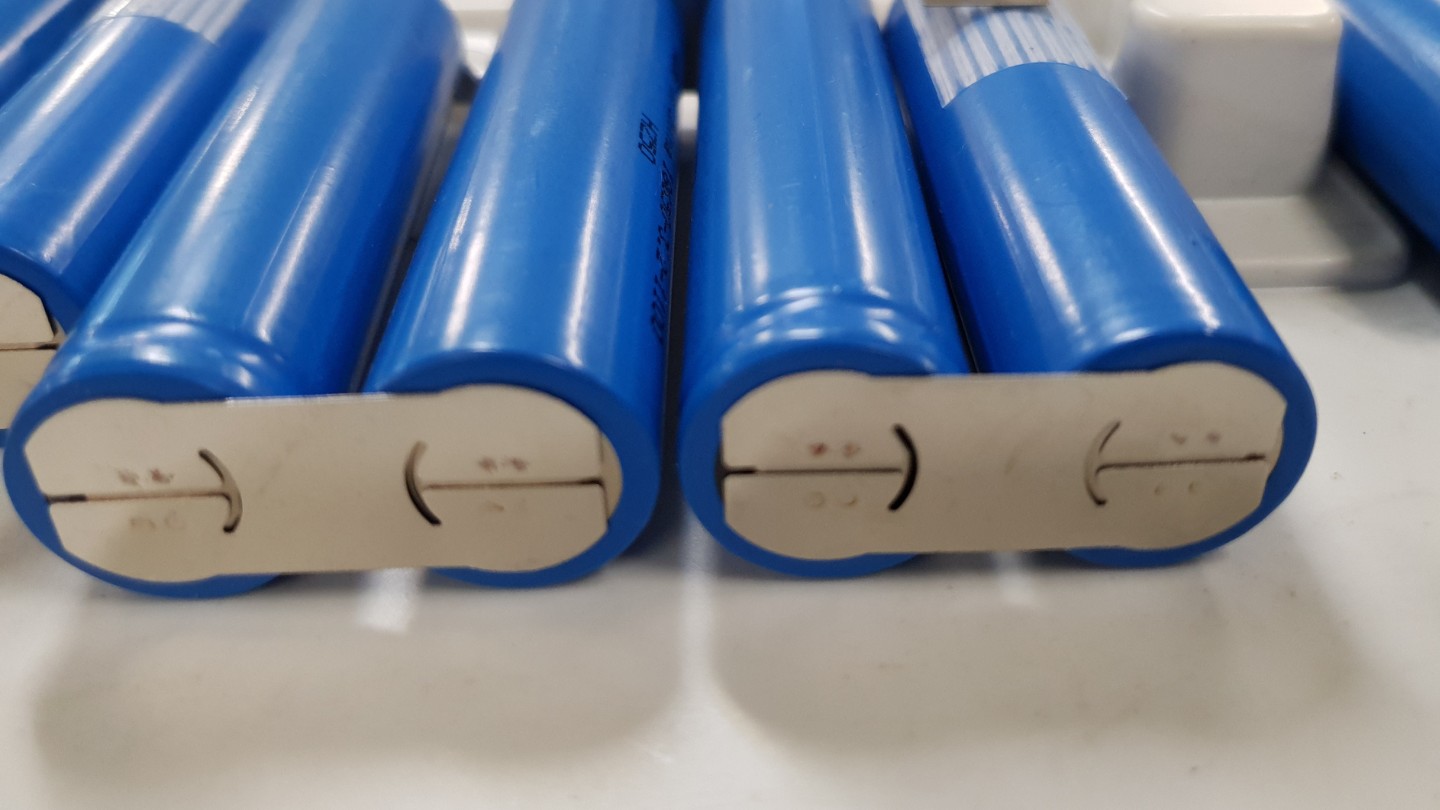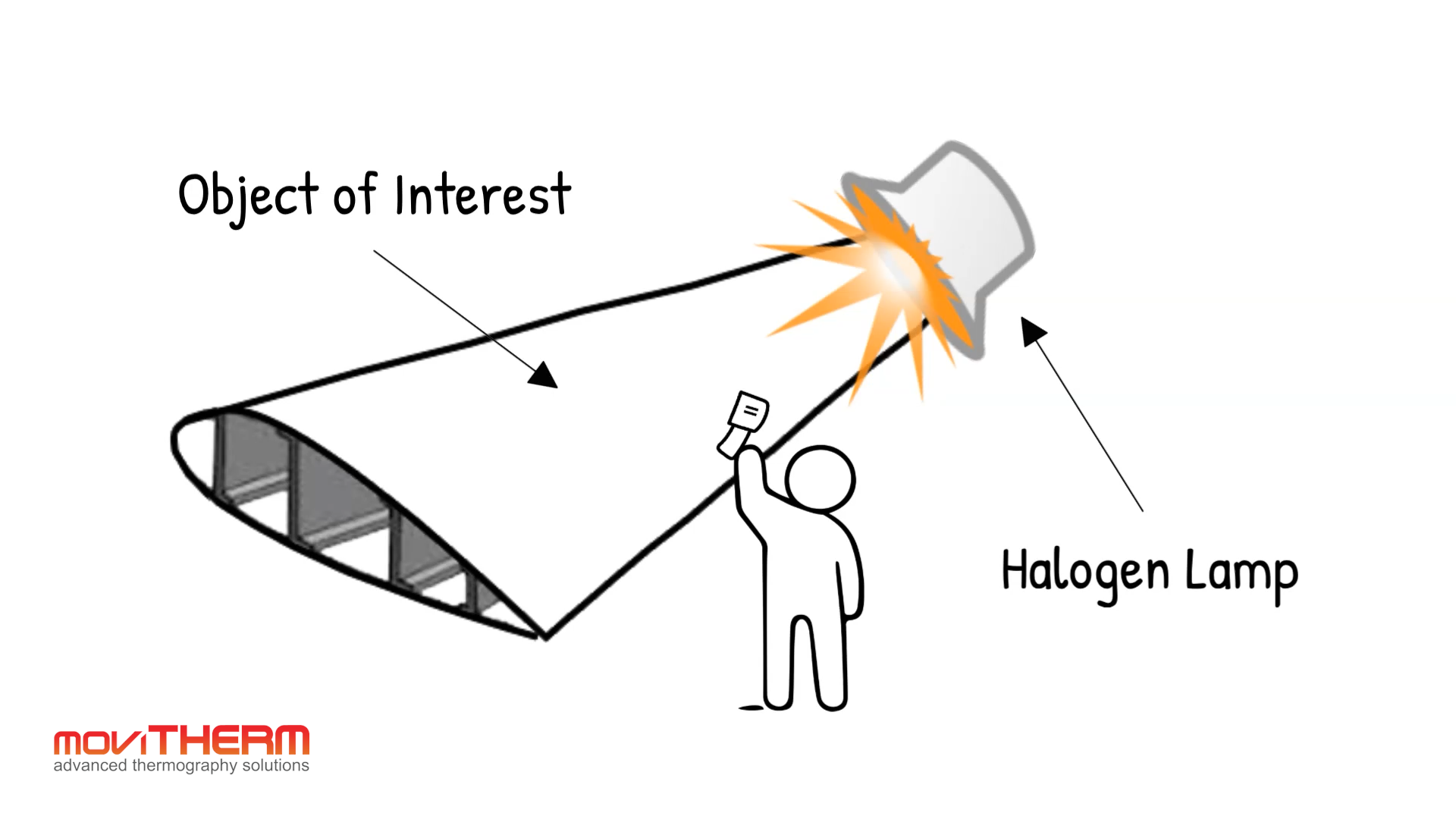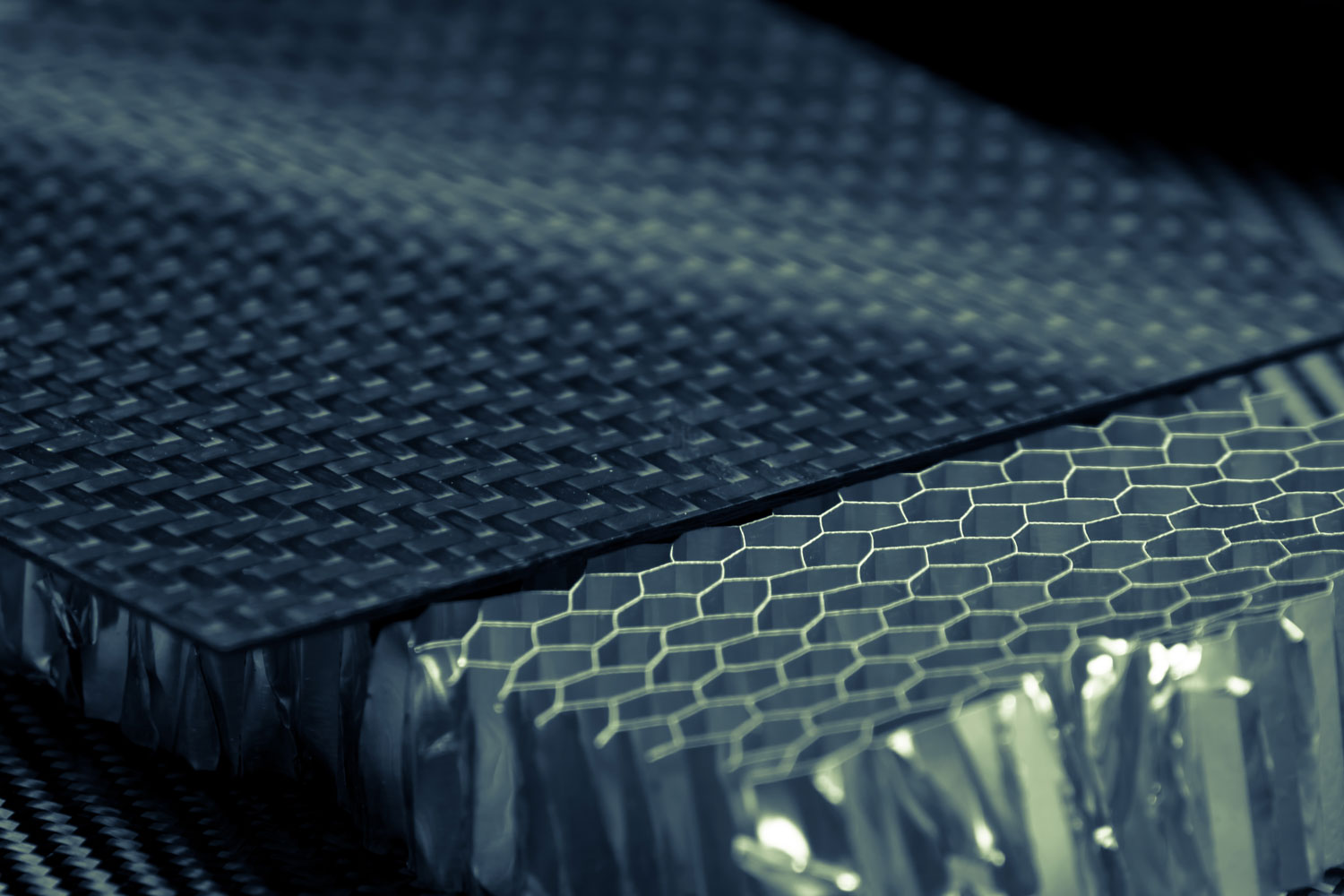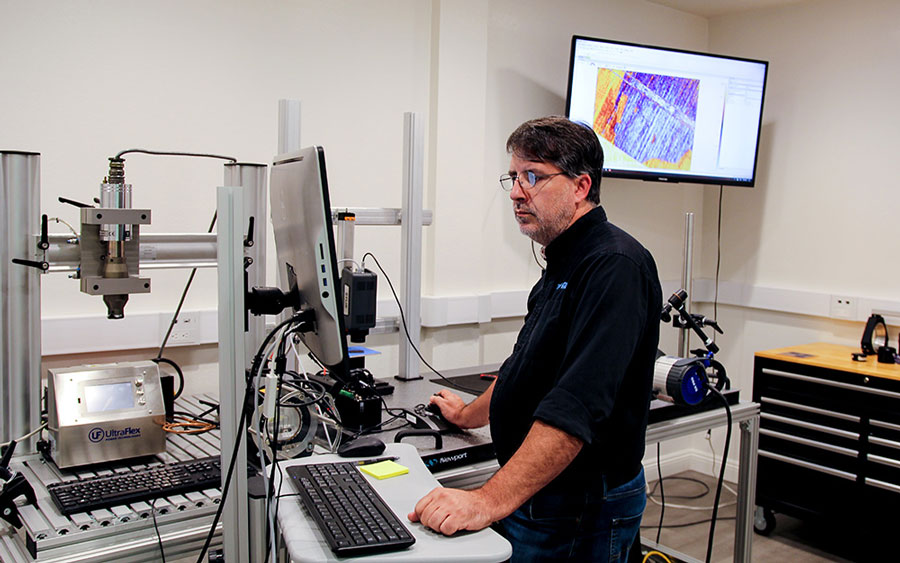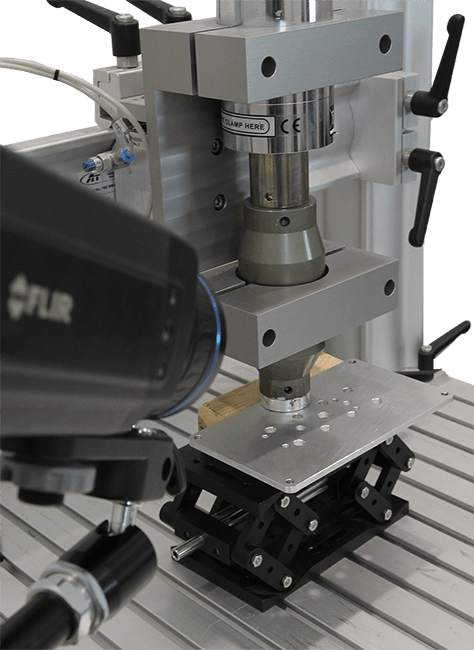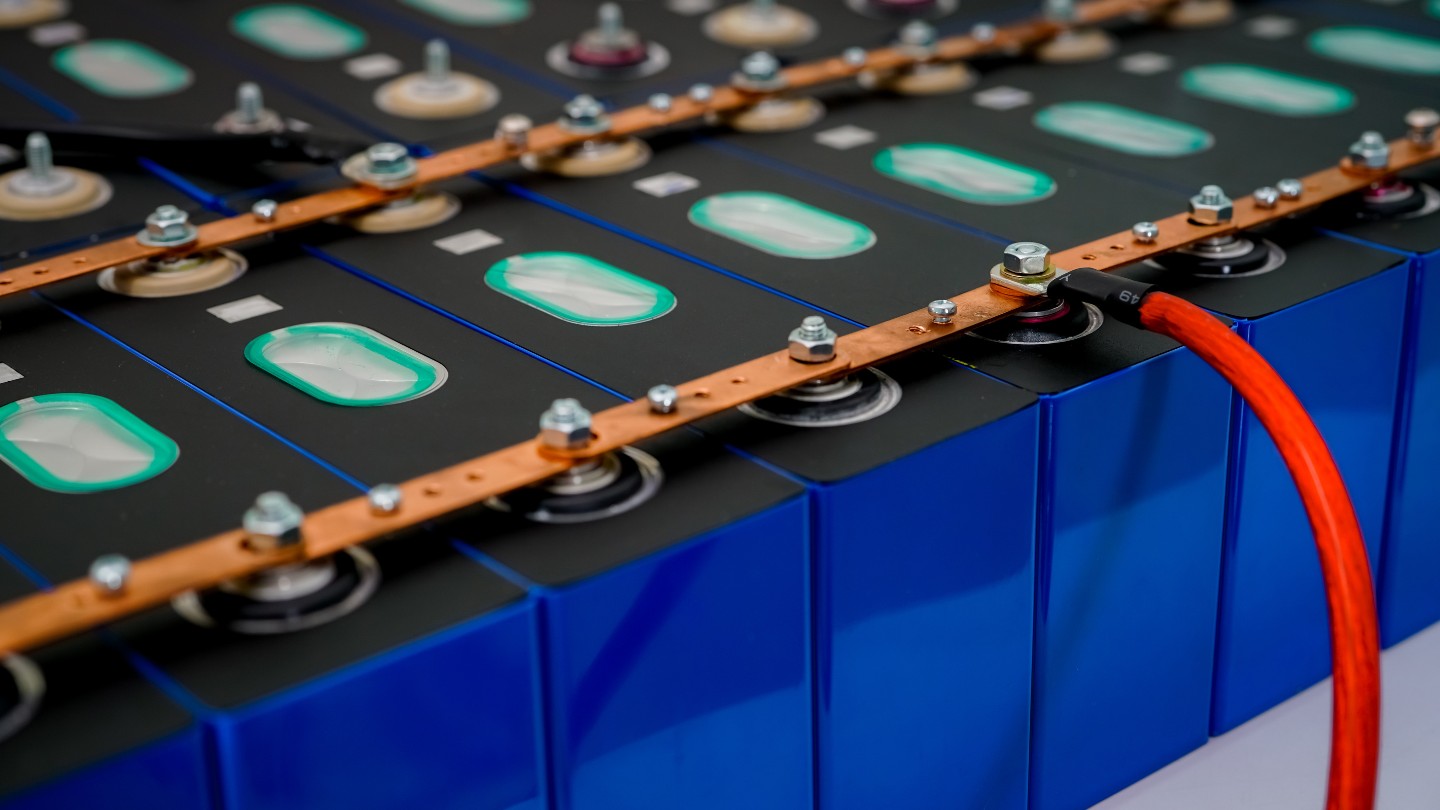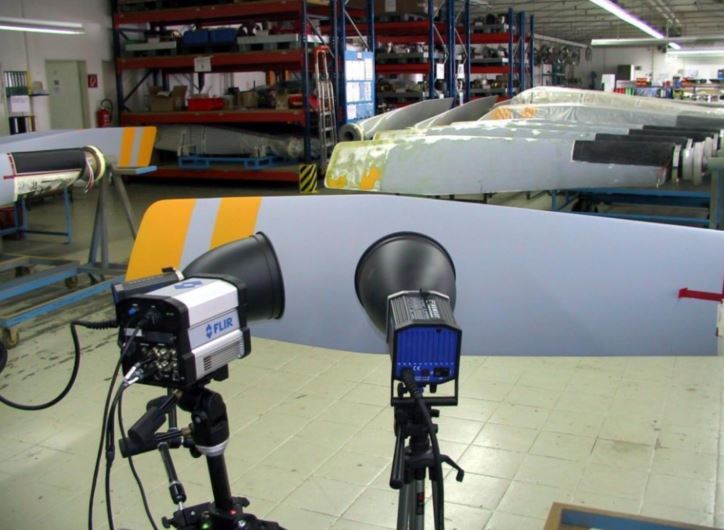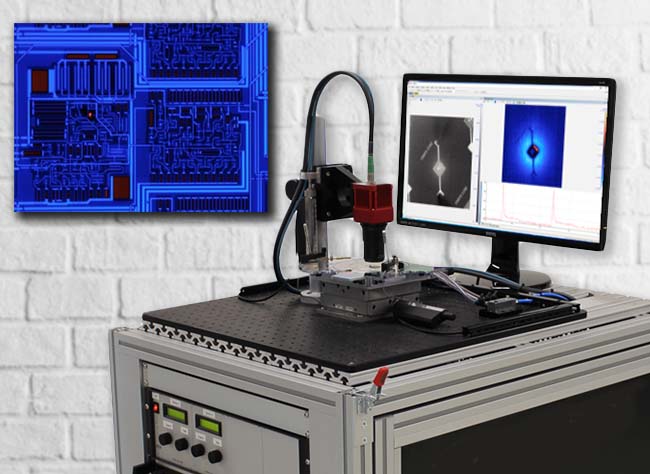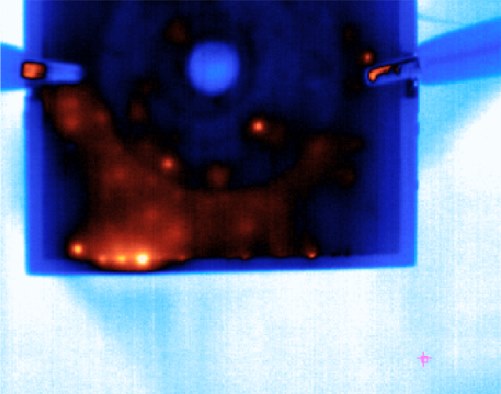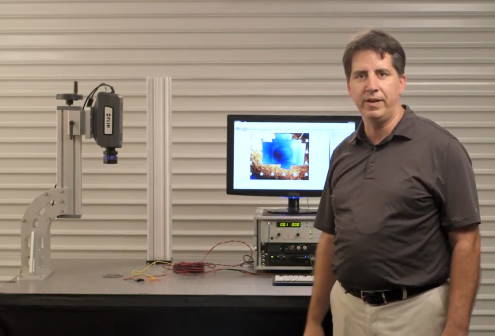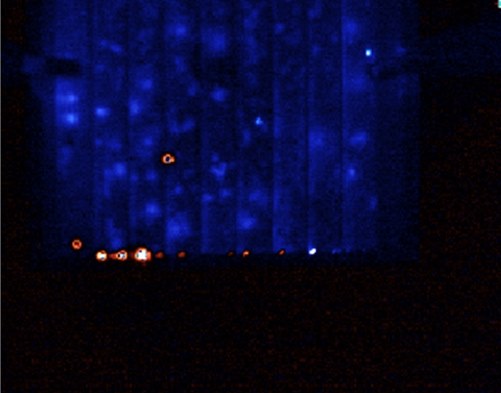The Power of Infrared NDT in Composite Inspection
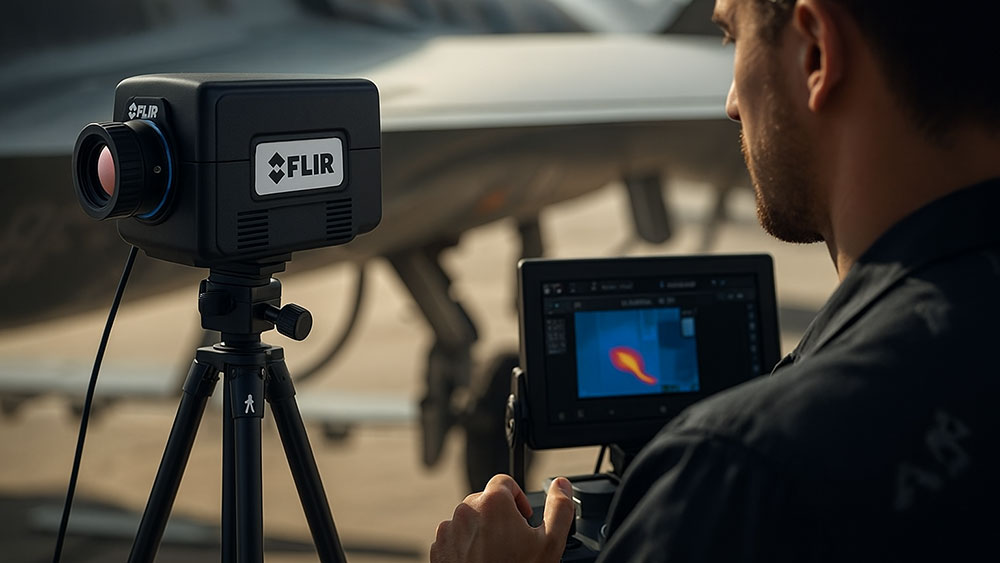
In industries like aerospace, automotive, and renewable energy, composite materials have become essential. They are strong, lightweight, and corrosion-resistant, making them ideal for high-performance applications. However, their complex structure also makes them difficult to inspect. Traditional testing methods cannot always detect subsurface flaws, and physical testing risks damaging the part itself.
That is where infrared non-destructive testing (IR-NDT) comes in.
What Is Infrared NDT?

Infrared NDT uses thermal imaging to detect defects hidden beneath the surface of composite materials. Instead of relying on sound waves or physical probes, it measures how heat moves through the material.
By applying controlled thermal energy to the surface and recording how that heat spreads and cools, inspectors can visualize internal features similar to how an X-ray reveals hidden layers, but without radiation or contact.
Defects such as delaminations, voids, or disbonds interrupt the normal flow of heat. These irregularities appear as temperature variations on a thermal camera, allowing operators to identify and locate hidden flaws quickly and accurately.
How the Process Works
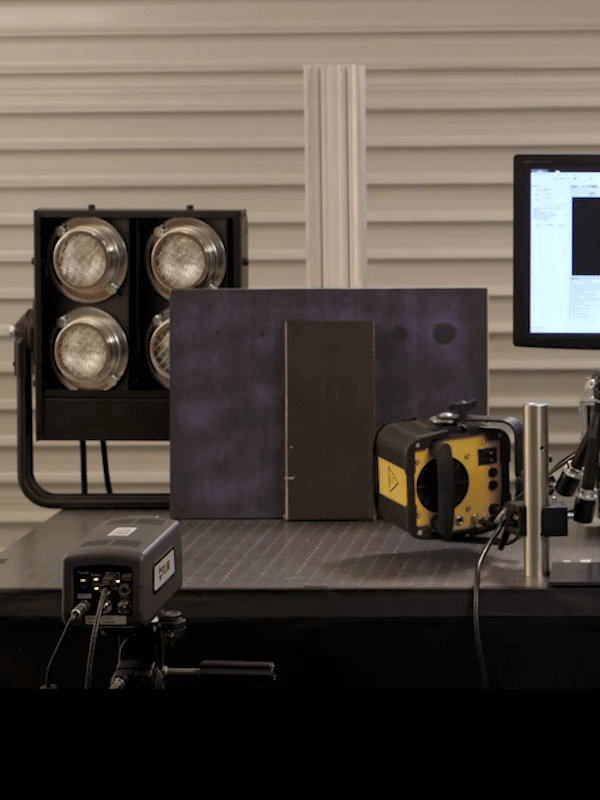
Infrared NDT typically involves three main steps:
- Thermal Excitation: A controlled heat source, such as a flash lamp or halogen array, briefly heats the surface of the composite.
- Thermal Response Capture: A thermal camera records how heat dissipates across the surface over time.
- Analysis: Software evaluates temperature changes to identify inconsistencies that reveal subsurface defects.
This non-contact process provides repeatable and reliable data while minimizing the need for operator interpretation. It also enables automated inspection setups for high-throughput environments.
Common Defects Detected with Infrared NDT

Infrared thermography can detect a wide range of hidden flaws that affect the performance and safety of composite structures. These include:
- Delaminations caused by impact or manufacturing errors
- Disbonds between bonded layers or adhesive joints
- Cracks that disrupt heat transfer
- Voids or inclusions within resin or honeycomb cores
- Moisture ingress that changes thermal conductivity
By identifying these issues early, manufacturers can adjust production parameters, improve consistency, and prevent costly rework or failures in service.
Why Infrared NDT Excels for Composites
Composite structures are layered and directional, which makes ultrasonic or tap testing less reliable. Infrared thermography, on the other hand, can inspect large surface areas in seconds and visualize full-field defects without requiring direct contact.
Key advantages include:
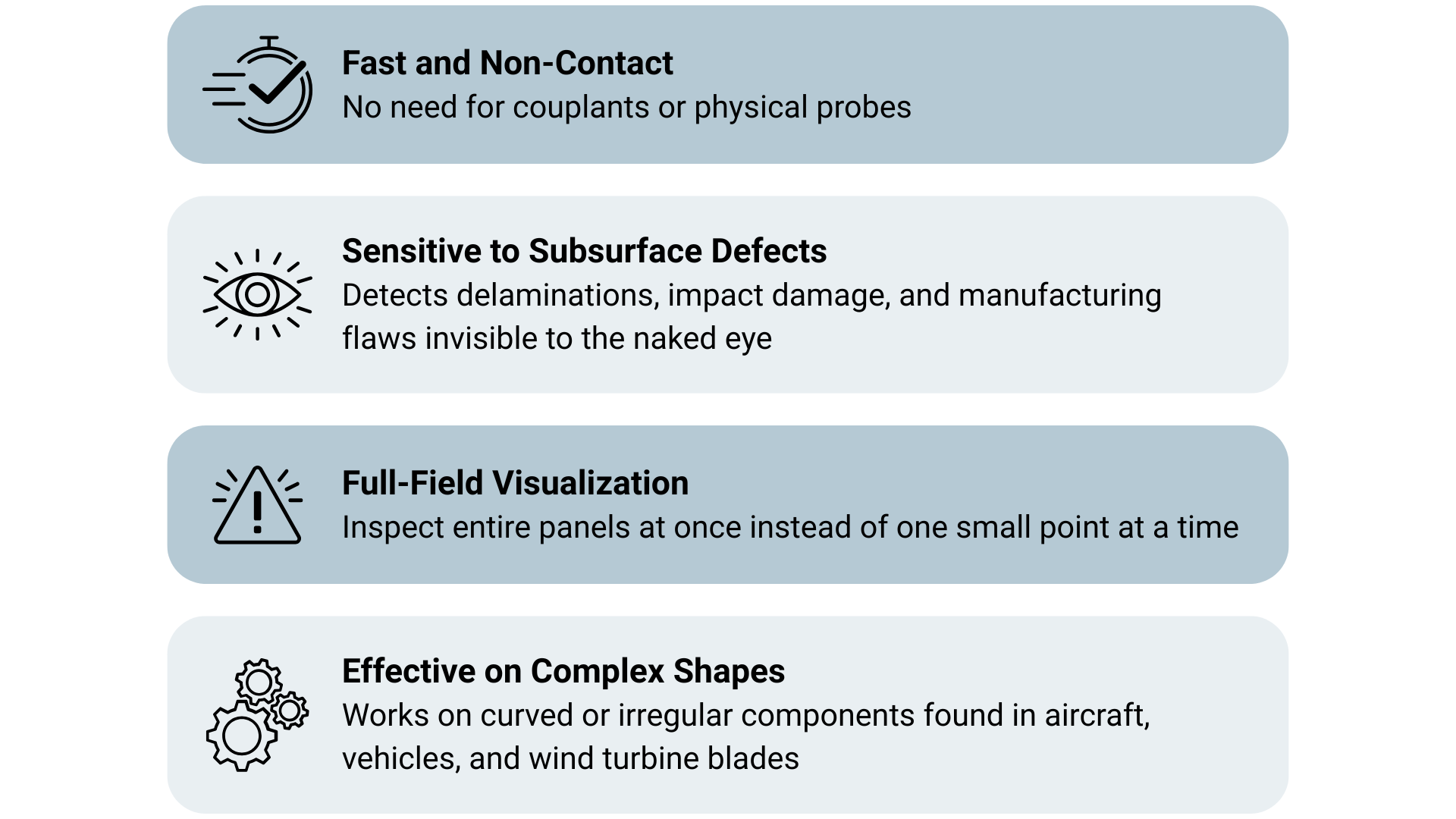
How Infrared NDT Compares to Other Inspection Methods
Infrared NDT stands out for its ability to cover large areas quickly while providing detailed subsurface insights without contact or consumables.

Infrared NDT stands out for its ability to cover large areas quickly while providing detailed subsurface insights without contact or consumables.
Real-World Applications
Infrared NDT is widely used in aerospace to inspect carbon fiber-reinforced polymer (CFRP) parts, from fuselage panels to control surfaces. It is also applied in automotive manufacturing for lightweight body components and in wind energy for inspecting turbine blades.
For example, moviTHERM’s infrared NDT systems combine high-resolution Flir thermal cameras with intelligent software that automates heating control, image acquisition, and defect detection. Engineers can view live thermal results, compare pass or fail thresholds, and generate detailed inspection reports in seconds.
Industries That Benefit from Infrared NDT
Infrared NDT provides value across multiple industries that rely on advanced composite materials

- Aerospace: Carbon fiber fuselage panels, control surfaces, and bonded structures
- Automotive: Composite body panels and structural reinforcements
- Wind Energy: Blade inspection for delamination and water intrusion
- Marine: Sandwich core structures and hull integrity
- Sports Equipment: High-performance frames, helmets, and composite gear
Each of these sectors benefits from faster inspection times, reduced waste, and higher quality assurance.
Seeing What Others Miss
Traditional inspection techniques often fail to reveal subtle disbonds or impact damage that can lead to costly failures later. Infrared NDT changes that. By visualizing how heat travels through the material, it provides a clear, non-destructive look inside composites. This approach improves quality assurance and increases confidence in structural integrity.
The Future of Composite Testing
Infrared NDT is more than just a faster way to inspect materials. It represents a shift toward smarter, data-driven inspection methods that enhance reliability and safety. With over 25 years of experience in thermal imaging, moviTHERM provides turnkey infrared NDT solutions that help ensure quality, reduce downtime, and maintain compliance with the highest industry standards.
About moviTHERM
moviTHERM – Advanced Thermography Solutions was founded in 1999. The company offers solutions for plastic welding, package sealing, and non-destructive testing. In addition, moviTHERM provides IoT Cloud monitoring solutions for thermal imaging applications for early fire detection, machine condition monitoring, and other applications. moviTHERM is a Teledyne Flir Premium Partner and master distributor for FLIR Thermal Cameras for automation and science applications.




